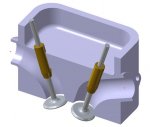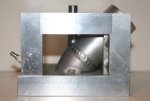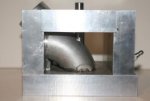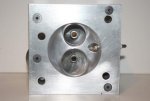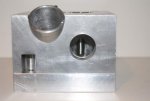Lately I've been thinking a lot about some posts concerning the need for a new cylinder head design for the 320 ci straight eight.
Attached is a starter drawing of a cross-flow head with individual intake and exhaust ports. The compustion chamber has been redone as a shallow hemi type with shallow valve angles of 17 degrees to the vertical.
I teach Computer Aided Design, at the state university, using CATIA.
David Lomshek
Pittsburg, Kansas
Attached is a starter drawing of a cross-flow head with individual intake and exhaust ports. The compustion chamber has been redone as a shallow hemi type with shallow valve angles of 17 degrees to the vertical.
I teach Computer Aided Design, at the state university, using CATIA.
David Lomshek
Pittsburg, Kansas


